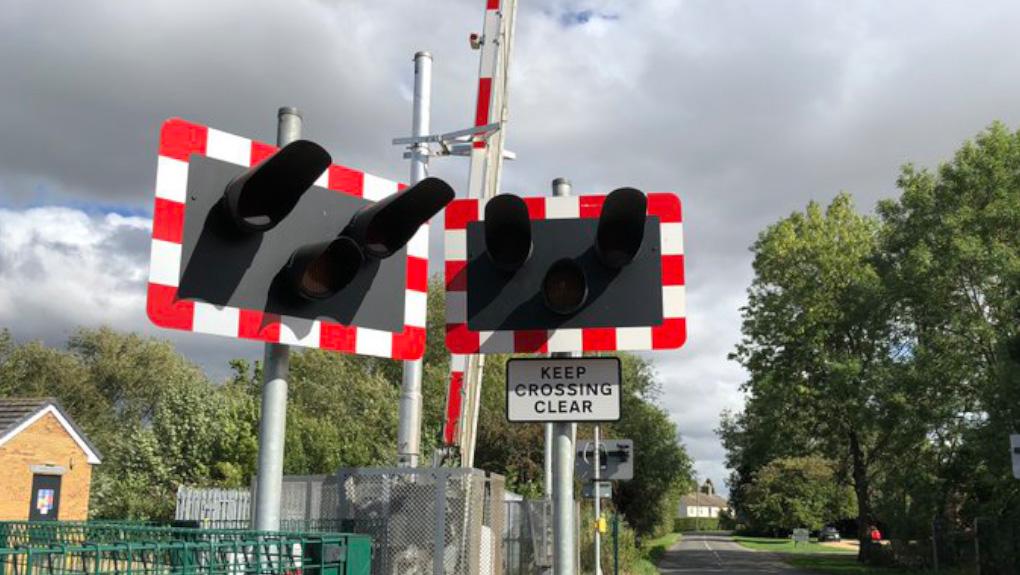
Britain has around 5,800 level crossings on the mainline railway with around another 1,500 on heritage and minor railways, and there has been important progress in safety in recent years.
Draft proposals in the new Principles for managing level crossing safety are designed to improve risk assessments at level crossings and provide practical advice on how to identify and manage risks that affect the safety of people who use them.
The plans move away from the current, more prescriptive document and aims to give industry greater confidence in putting forward innovative designs to reduce risks.
The guidance focuses on the need to consider how level crossings are actually used and encourages a whole system approach by considering the user, railway and highway.
The principles also emphasise the importance of collaboration to remove and manage risks and explains how cost benefit analysis can be used in decision making to allow for consideration of all relevant costs and benefits. Real-life examples will be added to further illustrate good practice.
Proposals have so far been welcomed by industry figures in making it easier to support designers, planners, engineers and those dealing with access and public rights of way matters.
Ian Prosser CBE, HM Chief Inspector of Railways said: “With more than 7,000 level crossings in Britain, there is no one size fits all approach to safety. Every level crossing is different and risk assessments should take account of the circumstances of each one.
“The previous guidance did not set standards, but did describe methods of operation, and as such has been perceived as setting requirements for level crossing design.
“We wanted to change that and these new principles better empower industry to make informed decisions about crossings. These new principles will support a focus on continued improvement in level crossing risk management.”
Rob Wainwright, Head of Level Crossings at Network Rail and chair of the industry level crossing strategy group, said: “We welcome this updating of the level crossing guidance and the move towards a more risk-based principles approach. I thank the ORR for allowing the wider level crossing community and stakeholders to engage and input into this process.
“Once published, it will encourage more effective collaboration and greater innovation in level crossing risk management, which will ultimately reduce risk at level crossings in the future.”
Jay Heavisides, Principal Risk Analyst at RSSB, said: “We welcome the new level crossing guidance principles. They encourage thinking about why level crossing risk occurs and how it could be mitigated across the different interfaces.
“We appreciate the collaborative approach to the development of these and look forward to continuing to work with ORR post consultation to implement them.”
Notes to editors Collapse accordion Open accordion
- ORR has particular involvement in level crossing safety through the:
- Health and Safety at Work etc. Act 1974 - this puts a duty on employers to secure the health, safety and welfare of employees, as well as protecting the public against risks to health or safety arising out of work activities.
- Level Crossings Act 1983 - this authorises the Secretary of State for Transport to make level crossing orders for the protection of those using a level crossing. ORR usually does this on behalf of the Secretary of State. Level crossing orders cover individual level crossings. They specify the protective equipment required at a crossing.
- For more information on the consultation on the Principles for managing level crossing safety please visit our website or to view the consultation document please visit here and the draft principles here.
- Once work is complete, the new guidance will replace current guidance known as Level Crossings: Guidance for Managers, Designers and Operators or RSP7.
- The proposals have been worked on by ORR, the heritage and mainline rail industries, local authorities and rail organisations.
- Guidance has been divided into four sections covering: Level crossing risk assessment; Safe for the user principles; Safe railway principles; and Safe highway principles, to cover all aspects of level crossing safety.
- Level crossings provide access routes across our railways for the public and for private landowners, but they present a particular safety challenge which has increased as our railways and highways have become busier. They are a priority topic for the Office of Rail and Road (ORR) because of the potential for harm and injury to members of the public.
- Minor and heritage railways are 'lines of local interest', museum railways or tourist railways that preserve, re-create or simulate railways of the past; or demonstrate or operate historical or special types of motive power or rolling stock. There are well over 200 such railways operating across Great Britain and ORR is responsible for regulating their safety.

